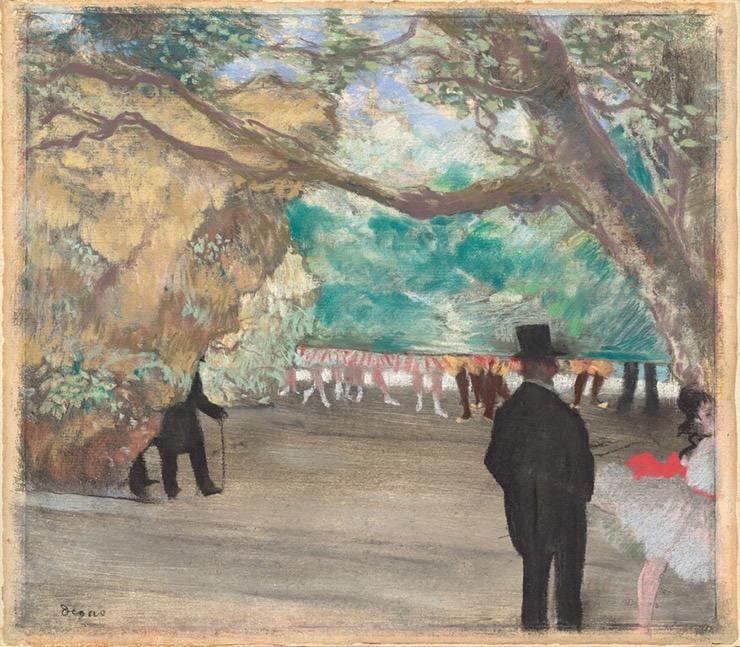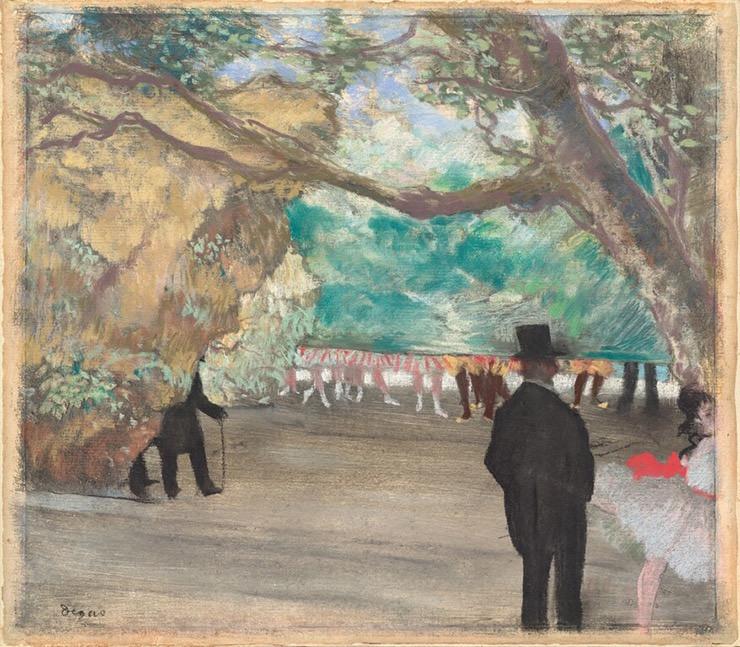In these uncertain times, the National Gallery of Art’s in-person exhibit “Degas at the Opéra” offers a comforting return to a well-known artist while simultaneously examining the influences and styles that defined his work in a refreshing light.
When most people think of 19th-century French artist Edgar Degas, they picture his famous paintings of ballet dancers. This exhibit challenges and redefines that unilateral perception of Degas by presenting a comprehensive view of his many works. Through its organization around the theme of Degas’ exposure to and involvement with the Paris Opéra, this collection showcases a wider view of Degas’ work. Perhaps when we think of Degas, “Degas at the Opéra” argues, the first word that comes to our minds should be “opus” instead of “dancers.”
“Degas at the Opéra” is expansive. Each room within the exhibit outlines a specific interest and stage of the artist’s life. Depicting paintings of the same subjects side by side allows the viewer to see the both the commonalities among artworks as well as the differences, illustrating the progression and development of Degas’ study of the human figure. On their own, these studies may appear disjointed or strange, but within the context of Degas’ paintings in the exhibit, viewers can more deeply understand their role in Degas’ artistic career.

The exhibit also speaks to Degas’ versatility as a painter, with a broad array of media and subjects represented in a variety of styles, sizes and layouts. It contains both still portraits of people relevant to the Paris Opéra, as well as energetic images depicting the motion of dance. Even within his iconic images of the ballet, Degas depicted dancers singularly and in groups, at rehearsals and onstage. Some of his images of dancers are colorful and lively, while others are more monochromatic and haunting. The people in Degas’ works also express a wide range of emotions: Some are focused, while others are carefree and vivacious in performance.
Additionally, Degas’ iconic sculpture “Little Dancer Aged Fourteen” offers viewers an opportunity to consider Degas’ technical innovation and development of a human form from study sketches. Notably, the exhibit also contains painted versions of some of Degas’ fans. His creation of these fans may surprise many viewers. Though foreign, they do resemble Degas’ more popular works in their subject matter, depicting a range of very realistic to more abstract dance figures and sharing many common themes and stylistic elements with his other paintings.
The exhibit provides important contextual information, which explains why Degas’ observation of dancers during opera rehearsal was so revolutionary at the time — information that makes viewing these images, as well as the perspectives of the artist and male subscribers depicted in them, all the more intriguing.
When looking at the dancers, the viewer experiences a magical sense of movement through the lightness of their bodies and the movement of their costumes. In his paintings of performances on stage, Degas’ representation of the opera sets are so intricate and vivid that distinguishing between the sets and the fantastical landscapes they are meant to depict is sometimes difficult.
Additionally, the exhibit’s inclusion of enriching pieces such as period costume designs, a model of the opera and video recreations of opera performances in Degas’ art succeed in painting a vivid picture of the Paris Opéra. Shown alongside Degas’ works, these elements enhance the viewer’s understanding of and interaction with the paintings hanging on the walls by capturing every aspect of the opera. Watching a costumed ballet dancer float lightly across the video screen as corresponding music plays livens the dancers shown on Degas’ canvases on the surrounding walls. While walking through the exhibit, one feels as though they have escaped modern life and entered the late 19th-century Paris Opéra.
If you are in the Washington, D.C. area this semester and are looking for an engaging and enjoyable cultural experience, “Degas at the Opéra” is open at the National Gallery of Art through Oct. 12. Additionally, the museum’s West Building’s Ground Floor galleries are open to visitors. Free timed passes are currently required to visit the museum and can be booked online in advance.




















